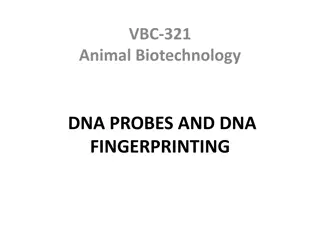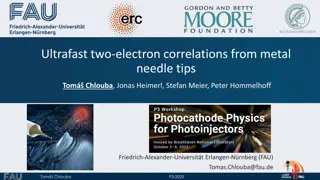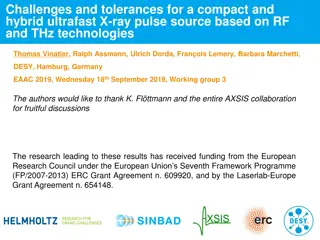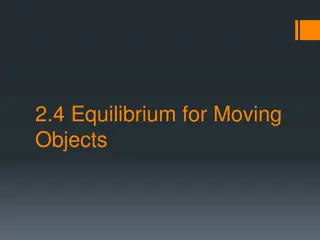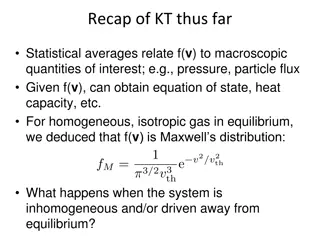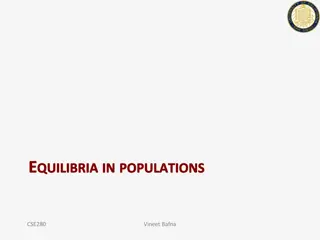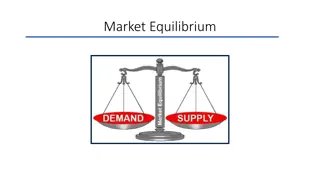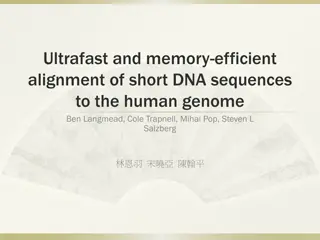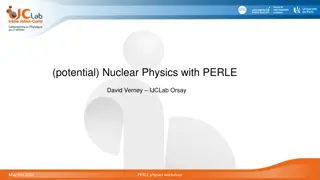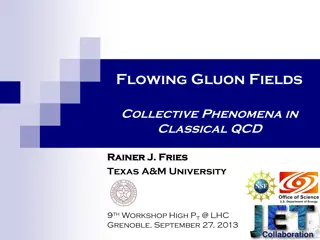Exploring Non-equilibrium Phenomena in Correlated Materials with Ultrafast Electron Probes
Investigating the transition mechanisms in materials such as Cu2S and Fe3O4 using ultrafast electron diffraction techniques to understand the interplay between electronic degrees of freedom and lattice dynamics. By monitoring structural evolution in the ultrafast time domain, the project aims to shed light on symmetry changes, charge/orbital ordering, and spin-lattice coupling in various materials.
- Correlated Materials
- Ultrafast Electron Probes
- Structural Dynamics
- Non-equilibrium Phenomena
- Transition Mechanisms
Download Presentation

Please find below an Image/Link to download the presentation.
The content on the website is provided AS IS for your information and personal use only. It may not be sold, licensed, or shared on other websites without obtaining consent from the author. Download presentation by click this link. If you encounter any issues during the download, it is possible that the publisher has removed the file from their server.
E N D
Presentation Transcript
Tracing Nonequilibrium Phenomena in Correlated Materials by Using Ultrafast Electron Probes Jing Tao (PI), Junjie Li, Jun Li Condensed Matter and Material Science Division, BNL Sponsored by the U. S. DOE, BES, Division of Materials Sciences and Engineering and Early Career Award 2019 ATF Users Meeting: Application for Continuation
Ultrafast electron diffraction: pump-probe Camera speed: 1000 frame/s = 10-3s Ultrafast: 100 fs = 10-13s Pump Detector Optical pump Sample electrons ~1ps ~10fs e e e - spins - phonons - e e - e - ~100ps - Probe e - Electron probe Time Delay Pump: initiate the process and set the time zero Probe: take snapshot at different delay times Delay time: optical length difference, 1um ~3.3fs
BNL MeV-Ultrafast Electron Diffraction Temporal resolution ~ 200 fs 106electrons per pulse Acceleration voltage = 3 MeV
Motivation of Project I: The Transition Mechanism in Cu2S TEM study implies an intimate interplay between electronic degrees of freedom and the lattice during the structural phase transition. Ultrafast x-ray absorption work suggests the transition is not governed by electronic mechanisms but by the copper ion self-diffusion rate. Direct probes of the structural evolution using momentum-resolved techniques in the ultrafast time domain.
Structure evolution of phase transition J. Li; J. Tao, Appl. Phys. Lett. 113, 041904 (2018) 10.2 ps 2.3 ps Volume change vs Symmetry change?
Experiment Plans Structural dynamics of lattice distortion and charge/orbital ordering in Fe3O4 The spin, charge, orbital, and trimeron ordered ground state of magnetite (Fe3O4) represents perhaps the most complex electron ordering in transition-metal compounds. By monitoring the evolution of the characteristic scattering intensities across the structural transition with pump-probe electron diffraction, the dynamic behavior of trimerons and associated charge/orbital ordering can be systematically investigated. Dynamics of abnormal symmetry breaking and spin-lattice coupling in CrI3 Chromium trihalides, CrX3(X = Cl, Br, I) are a well-known class of layered van der Waals ferromagnet. However, until recently, monolayer CrI3was demonstrated to be an ferromagnet with out- of-plane spin orientation. It is intriguing that a S6symmetry operation in the crystal appears as the temperature decreases, which is in contrast to what happened in other 2D materials, such as 2H-TaSe2. The abnormal symmetry broken process and intrinsic relationship between structural and magnetism can be thus investigated by our UED technique.
Beam Requirements Parameter Nominal Requested Beam Energy (MeV) 3 MeV 3 MeV Bunch Charge (pC) 4.0 0.2 Rep. Rate (Hz) 5 5 Sample Materials: Fe3O4 and CrI3 Special Equipment: Liquid Nitrogen cooling
8 2019 Experiment Time Estimates Run Hours (include setup time in hours estimate): Number of experiment hours: 200 Overall % setup time: 10% Hazards & installation requirements: Large installation (chamber, insertion device etc ): N Pump laser use: Y Cryogens: Y Introducing new magnetic elements: Y Introducing new materials into the beam path: Y Any other foreseeable beam line modifications: N
Revealing thermal transport mechanism in thermoelectric materials Junjie Li (PI), Gang Chen, Yimei Zhu Condensed Matter and Material Science Division, BNL Massachusetts Institute of Technology Sponsored by the U. S. DOE, BES, Division of Materials Sciences and Engineering and Early Career Award 2019 ATF Users Meeting: Application for Continuation (no experiment time received since the last users meeting)
Thermal transport at nanometer Thermoelectric materials: MFP is too short Nanometer scale materials: theory and regular measurement don t work Zeng, L., Scientific Reports 5, 17131 (2015)
Ultrafast Electron Diffraction study of thermal transport in Au/Bi2Te3 e- Au Bi2Te3 A B Heat transport 1120 Phonon scattering and Thermal transport at interface 3030 e-p coupling and phonon coupling within A
Pulsed MeV electron Radiation Damage Diffraction before destruction 100 e/A2in TEM, Silver nano particles
Beam Requirements Parameter Nominal Requested Beam Energy (MeV) 3 MeV 3 MeV Bunch Charge (pC) 4.0 10 Rep. Rate (Hz) 5 5 Sample Materials: Au/Bi2Te3and Silver nano particles Special Equipment: Quadropole magnetic Lens
14 2019 Experiment Time Estimates Run Hours (include setup time in hours estimate): Number of experiment hours: 200 Overall % setup time: 15% Hazards & installation requirements: Large installation (chamber, insertion device etc ): N Pump laser use: Y Cryogens: N Introducing new magnetic elements: N Introducing new materials into the beam path: Y Any other foreseeable beam line modifications: N
the characteristic dose and radiation (100 kV) dose Dc (C/cm2) 0.0025 0.01 0.11 0.2 2.5 20 0.5 62 Dec =Dc/e (e/ 2) 1.6 6.0 70 120 1600 12000 300 39,000 d(Mb) =100/Dec 64 16 1.5 0.83 0.06 0.008 0.33 0.0026 Dc(100) Dc(300) Method Material Amino acid (glycine)a Polyethylene Coronenee Phthalocyanine (Pc) Cu-phthalocyanine Chlorinated Cu-Pc ZSM-5 zeolited Calcite (200 kV)g Fading of spots in electron diffraction patterns



